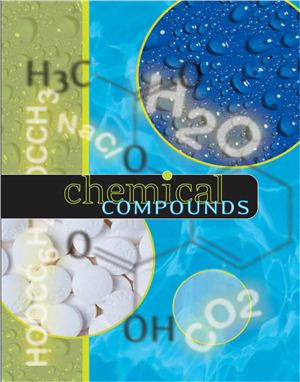An imprint of Thomson Gale,a part of The Thomson Corporation.
Thomson and Gale:
2005. – 980 p.
Water; sugar; nylon; vitamin C. These substances are all very different from each other. But they all share one property in common: They are all chemical compounds. A chemical compound consists of two or more chemical elements, joined to each other by a force known as a chemical bond.
This book describes 180 chemical compounds, some familiar to almost everyone, and some less commonly known. Each description includes some basic chemical and physical information about the compound, such as its chemical formula, other names by which the compound is known, and the molecular weight, melting point, freezing point, and solubility of the compound. Here are some things to know about each of these properties:
Other Names
Chemical Formula
Compound Type
Molecular Weight
Melting Point and Boiling Point
Solubility
Overview: The overview provides a general introduction to the compound, with a pronunciation of its name, a brief history of its discovery and/or use, and other general information.
How It Is Made:
Interesting Facts
Common Uses and Potential Hazards
For Further Information: As the name suggests, this section provides ideas for books, articles, and Inteet sources that provide additional information on the chemical compound listed.
2005. – 980 p.
Water; sugar; nylon; vitamin C. These substances are all very different from each other. But they all share one property in common: They are all chemical compounds. A chemical compound consists of two or more chemical elements, joined to each other by a force known as a chemical bond.
This book describes 180 chemical compounds, some familiar to almost everyone, and some less commonly known. Each description includes some basic chemical and physical information about the compound, such as its chemical formula, other names by which the compound is known, and the molecular weight, melting point, freezing point, and solubility of the compound. Here are some things to know about each of these properties:
Other Names
Chemical Formula
Compound Type
Molecular Weight
Melting Point and Boiling Point
Solubility
Overview: The overview provides a general introduction to the compound, with a pronunciation of its name, a brief history of its discovery and/or use, and other general information.
How It Is Made:
Interesting Facts
Common Uses and Potential Hazards
For Further Information: As the name suggests, this section provides ideas for books, articles, and Inteet sources that provide additional information on the chemical compound listed.

